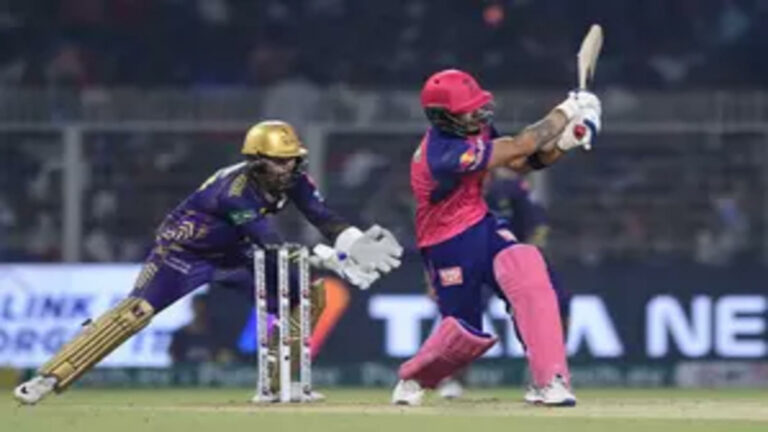The Impact of Cricket on National Sports Legislation
Gold365, Play99exch: National sports legislation plays a crucial role in governing the conduct and operation of sporting activities within a country. It encompasses a wide range of laws and regulations that aim to ensure fair competition, protect the rights of athletes, and promote the integrity of sports. By providing a legal framework for sports organizations and governing bodies to operate within, national sports legislation helps to maintain transparency, accountability, and ethical standards in the realm of sports.
Furthermore, national sports legislation outlines the rights and responsibilities of various stakeholders involved in sports, including athletes, coaches, administrators, and fans. It also addresses issues such as doping, match-fixing, and player contracts to safeguard the integrity of sports competitions and protect the welfare of individuals involved in sports. Through the implementation and enforcement of these laws, national sports legislation plays a significant role in shaping the landscape of sports governance and upholding the values of fair play and sportsmanship.
Historical Evolution of Cricket
Cricket, a sport with roots dating back to the 16th century in England, has evolved significantly over the years. Originally played by affluent individuals as a pastime, cricket gradually gained popularity among the masses, leading to the establishment of formal rules and regulations to govern the game. The first recorded cricket match took place in the 17th century, and it quickly became a symbol of national identity and pride for various countries.
As cricket continued to spread globally, it underwent several changes and developments that shaped the modern game we know today. From the introduction of various formats such as Test matches, One Day Internationals (ODIs), and Twenty20 (T20) cricket, to the technological advancements in equipment and playing surfaces, the evolution of cricket has been marked by innovation and adaptation. Moreover, the internationalization of the sport has led to fierce competitions between nations, captivating audiences worldwide and solidifying cricket’s position as one of the most popular sports globally.
Influence of Cricket on Sports Governance
Cricket holds a prominent place in the world of sports governance. The sport’s widespread popularity and influence have led to significant developments in how sports organizations are managed and regulated. With its rich history and global reach, cricket has set a benchmark for transparency, accountability, and integrity in sports governance.
The governance structures established in cricket have often served as models for other sports bodies. The emphasis on good governance practices, fair play, and ethical standards within cricket has not only benefitted the sport itself but has also influenced governance principles across various other sporting disciplines. As a result, cricket’s impact on sports governance has been profound, shaping the way organizations are run and contributing to higher standards of administration in the sports industry.
Impact of Cricket on Funding Allocation
Cricket’s status as a highly popular sport has significantly impacted the allocation of funding in the sporting world. National sports bodies often allocate a substantial portion of their resources to cricket, recognizing its immense fan base and commercial appeal. This preference for cricket in funding allocation has sometimes led to disparities in financial support for other sports, creating challenges for athletes and teams competing in less mainstream sports.
The financial investments made in cricket have not only bolstered the sport’s infrastructure and development but have also contributed to the growth of related industries such as broadcasting, sponsorship, and merchandise. This funding allocation has elevated cricket to a position of prominence in the sports sector, drawing in lucrative partnerships and opportunities. However, critics argue that the disproportionate focus on cricket may hinder the growth and competitiveness of other sports that do not receive the same level of financial support.
Regulation of Player Contracts in Cricket
Player contracts in cricket have undergone significant scrutiny and regulation in recent years. With the increasing commercialization of the sport and the rise of leagues like the Indian Premier League (IPL) and Big Bash League, cricket boards have had to establish clear guidelines to govern player contracts. This includes setting standards for payment structures, transfer rules, and dispute resolution mechanisms to ensure fairness and transparency in player agreements.
Furthermore, the regulation of player contracts in cricket extends beyond just financial aspects. Boards also emphasize clauses related to player behavior, code of conduct, and anti-corruption measures to uphold the integrity of the game. These contractual frameworks not only protect the interests of players and teams but also contribute to maintaining the credibility and trust of the sport among fans and stakeholders.
Effect of Cricket on Anti-doping Laws
Cricket’s impact on anti-doping laws has been significant in recent years. The sport’s high-profile matches and intense competitions have brought to light the need for stringent anti-doping measures to ensure fair play and protect the integrity of the game. As a result, cricket has played a crucial role in driving the development and enforcement of anti-doping regulations both at the national and international levels.
The prevalence of performance-enhancing drugs and substances in sports, including cricket, has raised concerns about the credibility and fairness of competitions. The introduction of comprehensive anti-doping programs and protocols in cricket has been a direct response to these challenges, aimed at maintaining a level playing field for all athletes and upholding the values of sportsmanship and fair competition. By prioritizing anti-doping efforts, cricket has set a precedent for other sports to adopt stringent measures to combat doping and ensure the purity of sport.
Role of Cricket in Promoting Gender Equality
Cricket, once considered a predominantly male-centric sport, has made significant strides in promoting gender equality in recent years. The increased visibility and support for women’s cricket have helped challenge traditional gender stereotypes and empower female athletes on a global scale. With the establishment of international women’s cricket leagues and tournaments, the sport has provided a platform for female players to showcase their talents and inspire the next generation of girls to pursue their sporting aspirations without gender-based limitations.
Moreover, the efforts to provide equal opportunities and resources for both male and female cricketers have helped bridge the gender gap in the sport. The implementation of policies and initiatives to address gender inequality in cricket has not only improved the overall inclusivity of the sport but has also encouraged more women to actively participate and excel in cricket at all levels. As cricket continues to evolve as a symbol of gender equality, it serves as a beacon of change and progress in the realm of sports and beyond.
Cricket’s Influence on Broadcasting Rights
The rise of cricket as a dominant sport globally has significantly impacted the landscape of broadcasting rights. With its massive fan base and popularity in various countries, cricket has become a lucrative commodity for broadcasters seeking to attract audiences. The high demand for cricket content has led to intense competition among broadcasting companies to secure exclusive rights to major tournaments and matches, resulting in substantial financial investments in broadcasting deals.
The influence of cricket on broadcasting rights can be seen in the way the sport has shaped the business models of media companies. The advent of subscription-based streaming services and dedicated sports channels has been driven in part by the demand for cricket content. This has not only provided fans with greater access to live matches and in-depth coverage but has also opened up new revenue streams for broadcasters. The increased competition for broadcasting rights in the cricketing world has not only raised the value of these rights but has also led to innovations in how matches are presented and delivered to the audience.
Legislative Measures to Combat Match-fixing in Cricket
Match-fixing in cricket has been a persistent issue that threatens the integrity of the sport. To combat this malpractice, legislative measures have been put in place to enforce strict penalties and deter players, officials, and others involved in match-fixing activities. These measures include comprehensive regulations that outline the consequences for engaging in match-fixing, such as bans from participating in cricket events and hefty fines.
Furthermore, legislative bodies have introduced proactive measures to prevent match-fixing before it occurs. This includes implementing stringent monitoring systems that analyze betting patterns and suspicious activities to identify potential instances of match-fixing. By taking a proactive approach and establishing robust legislative measures, cricket governing bodies aim to safeguard the sport from corruption and maintain its credibility among fans and stakeholders.
Future Trends in Sports Legislation Due to Cricket’s Influence
Cricket’s unparalleled popularity and global reach have led to significant shifts in sports legislation worldwide. As one of the most widely followed sports, the influence of cricket on legislative frameworks is undeniable. Moving forward, we can expect to see an increased emphasis on integrity measures, particularly in the realm of match-fixing and anti-corruption protocols.
Additionally, the growing commercialization of cricket has prompted legislators to reevaluate funding distribution models within the sports industry. With cricket’s substantial economic impact, there is a need for legislative bodies to establish guidelines that ensure equitable financial support for all sports, not just those with the largest fan bases. This shift towards fairer funding allocation will likely pave the way for more inclusive and sustainable sports legislation in the future.
How has cricket influenced sports legislation?
Cricket has had a significant influence on sports legislation due to its popularity and widespread reach. This influence has shaped various aspects of sports governance, funding allocation, player contracts, anti-doping laws, gender equality, broadcasting rights, and measures to combat match-fixing.
What role does cricket play in promoting gender equality in sports?
Cricket has played a crucial role in promoting gender equality in sports by providing opportunities for women to participate at both the grassroots and elite levels. This has led to legislative measures aimed at ensuring gender equality in sports governance, funding, and promotion.
How has cricket impacted funding allocation in sports?
Cricket’s influence has led to changes in funding allocation for sports, with increased resources being allocated to support the development and growth of cricket. This has prompted legislative reforms to ensure equitable funding distribution across various sports.
What legislative measures have been implemented to combat match-fixing in cricket?
In response to the threat of match-fixing in cricket, various legislative measures have been introduced to combat this issue. This includes regulations on betting, player conduct, and match integrity, as well as penalties for individuals involved in corrupt practices.
What are some future trends in sports legislation due to cricket’s influence?
The future trends in sports legislation influenced by cricket are expected to focus on enhancing transparency, accountability, and integrity in sports governance. This may involve stricter regulations on player contracts, anti-doping laws, gender equality, and broadcasting rights, as well as continued efforts to combat match-fixing.







